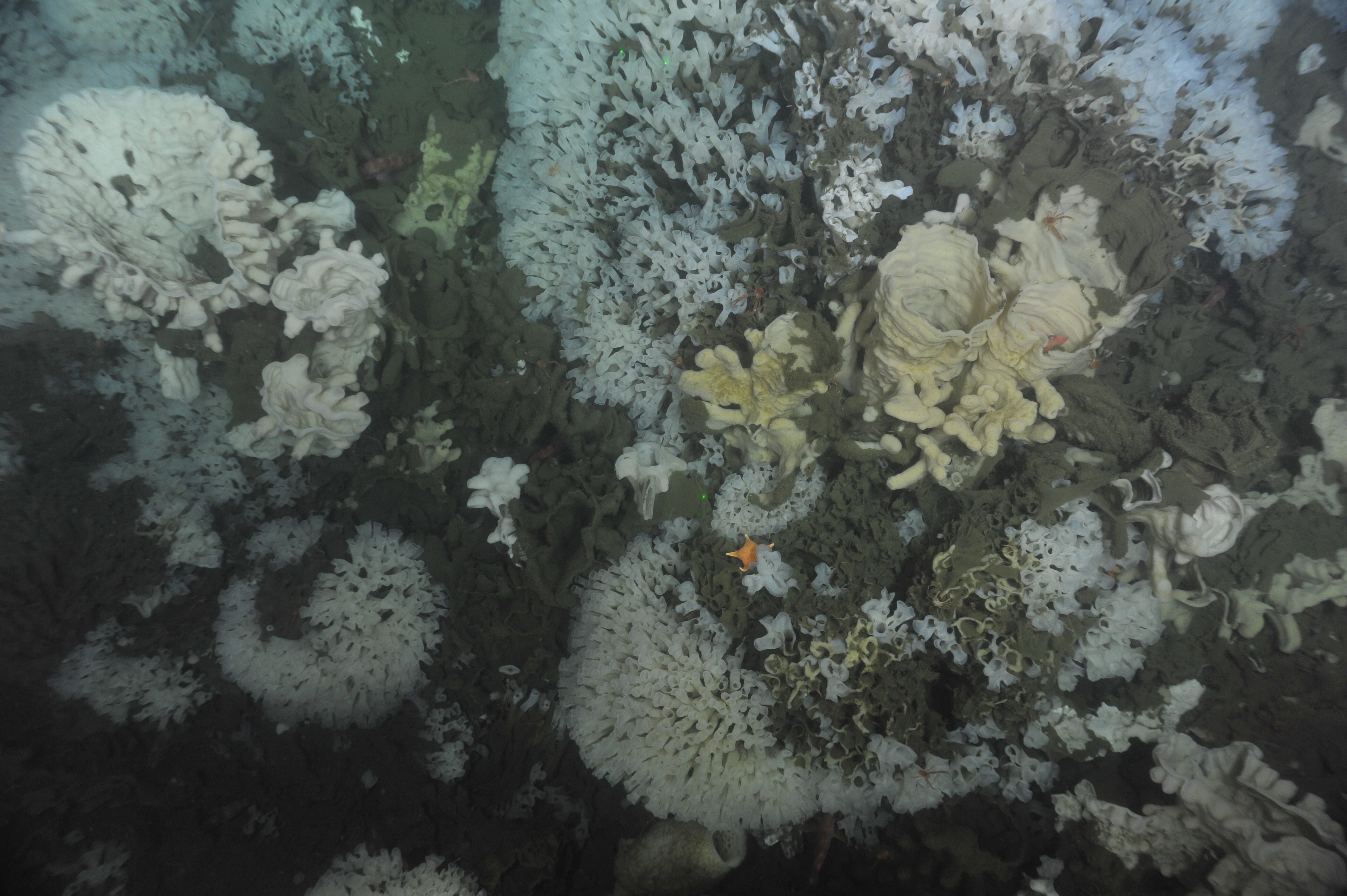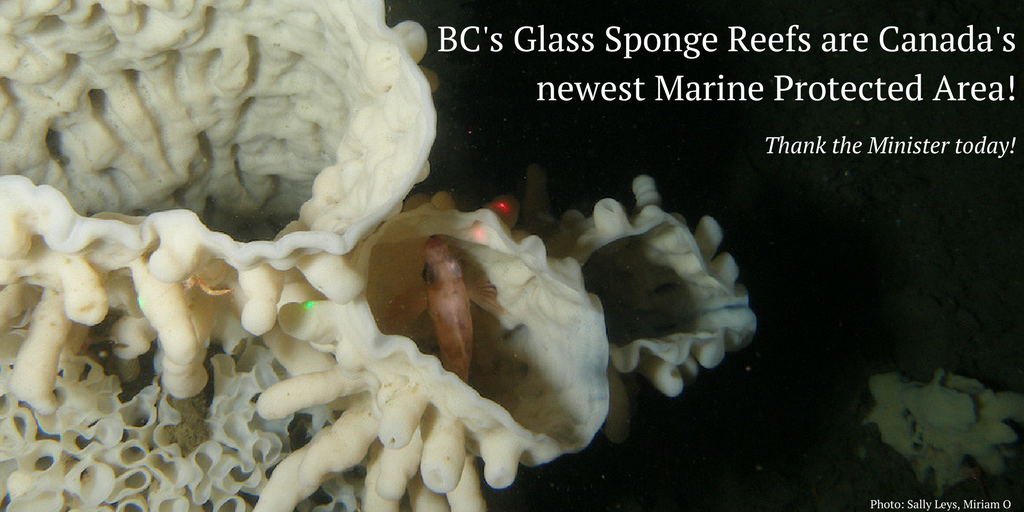BC’s Hecate Strait and Queen Charlotte Sound Glass Sponge Reefs added to Canada’s Tentative List for World Heritage Sites
Ottawa, Ont. – The holidays are looking brighter this year with the announcement that British Columbia’s Hecate Strait and Queen Charlotte Sound glass sponge reefs are being added to Canada’s tentative list for World Heritage Sites.
The nomination to the list was made by the Central Coast First Nations, specifically by the Chiefs of the Heiltsuk, Kitasoo/Xai’Xais, Wuikinuxv and Nuxalk Nations, and supported by Fisheries and Oceans Canada and CPAWS.
“The reefs are an international treasure. They are globally unique, incredibly important, and deserving of global recognition as a source of awe and wonder for generations to come,” said Sabine Jessen, CPAWS’ National Ocean Program Director. “The honour of a world heritage site designation would mean international recognition for these extremely rare and delicate reefs.”
The reefs were discovered in 1987 by a team of Canadian scientists surveying the seafloor in Hecate Strait and Queen Charlotte Sound, off BC’s north coast. The reefs are over 9,000 years old, reach the height of an eight-storey building, and cover 1,000 km2 of ocean floor. Since their discovery, a handful of smaller reefs have been found elsewhere in BC and Southern Alaska. However, BC’s Hecate Strait and Queen Charlotte Sound reefs are by far the largest living glass sponge reefs anywhere in the global ocean.
German scientist Dr. Manfred Krautter, was the first person to realize the global significance of the discovery of living glass sponge reefs in Hecate Strait and Queen Charlotte Sound. Dr. Krautter had studied fossilized reefs in Europe for many years and likened the discovery of living glass sponge reefs to finding a herd of dinosaurs on land. “At first I couldn’t believe it, we thought that glass sponge reefs had gone extinct about 40 million years ago, and then all of a sudden here is this ancient ecosystem alive and well off the coast of Canada, it was really amazing and I knew right away that the reefs should be a World Heritage Site” said Dr. Krautter.
Glass sponge reefs provide important deep-sea habitat for a host of species, from prawns to rockfish and sharks. But the reefs are also tremendously fragile, and not long after their discovery scientists noticed large areas of reef destroyed by bottom trawling, traps, and other harmful fishing activities.
After more than a decade of campaigning by CPAWS the glass sponge reefs were designated as a marine protected area (MPA) by Fisheries and Oceans Canada in February 2017. The reefs are also designated as a “Marine Sanctuary” by Central Coast First Nations due to their ecological and cultural importance. In their letter of nomination, the Chiefs state that, “As coastal First Nations, our culture and well-being are inextricably tied to the sea and the resources it provides… Ensuring the protection of this globally unique area is a priority for our nations.”
“We’re hopeful the World Heritage Committee will recognize the unique value of the glass sponge reefs as the international treasure that they are,” says Jessen.
-30 –


